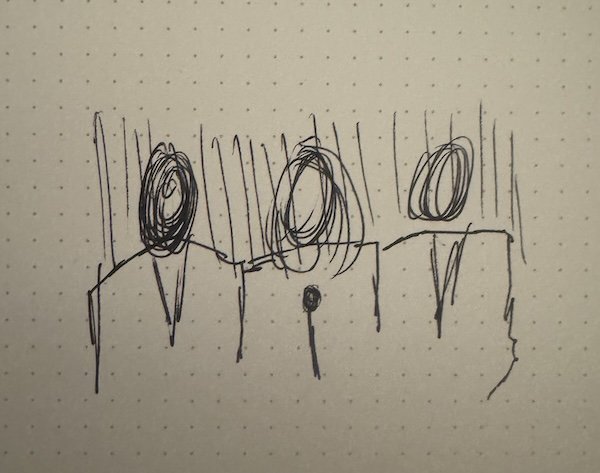You have the spectator imagine their word letter by letter. They dangle the pendulum over the drawing and see what direction the pendulum starts swinging in order to see if this pendulum can really pick up on their thoughts.
Three things will happen, and they’re all equally good.
1. It will work perfectly.
The spectator’s ideomotor response is strong, and the pendulum will swing in exactly the direction it should on each letter.
If they don’t understand how pendulums work, this will be completely inexplicable and already something of a miracle.
You say: “I know! Isn’t that insane?! But wait… check this out. I’ve been working with this pendulum for a few weeks now and have become really attuned to it. Let me show you something….”
2. It doesn’t work at all.
Either it swings randomly or barely swings at all. You do your best to interpret which direction it’s swinging for each letter, but sometimes it’s right and sometimes it’s wrong. There’s no real rhyme or reason to it. It’s just random.
You say: “That’s weird. I’ve had much better results than this so far. You know, what sometimes happens is because you know the direction it should move, and you’re holding the pendulum, that sometimes you subconsciously prevent it from moving in that direction. Let me try holding it, and it might be able to move more freely since I don’t know your word at all.”
3. It does work… but they sort of understand how pendulums work and that they’re controlling it, so they’re not that impressed.
If they imply, “Yeah, it worked. But it’s just me moving it subconsciously,” this is may be the best case scenario.
You say: “Yeah, I’ve read that idea too. That you’re just moving it without thinking about it. There’s a name for the phenomenon, but I forget what it is. Anyway, I don’t think that’s what going on here. Because… look… I don’t know what word you’re thinking of. But let me try holding it.”
For the second part, you’ll take the pendulum and hold it over the paper in one hand, while you hold a pen below it in the other.
You act as if you’re going to try and follow along the swinging of the pendulum with the pen. At first, you’ll just draw back and forth as the pendulum swings. Then you’ll act as if the pendulum is moving in more distinct orientations and you’re doing your best to mimic it with the pen.
If you want to build up the reveal, you can sort of block what you’re writing with your arm and hands as you hold the pendulum over what you write.
Try to interpret what you wrote…
“Is it…hmmm… I don’t know what that is. A C? C-O-N-O-T? Or…hmmm….”
They—as seemingly the only person who knows what the word is—will see their word immediately in the scribble. Comet.











